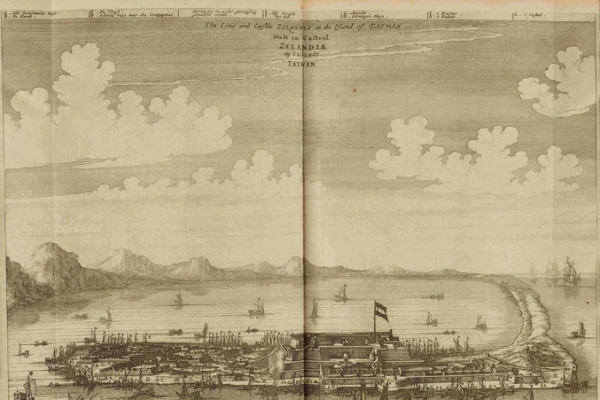The National Palace Museum in Taiwan has launched a special exhibition titled “Building Cities: Taiwan’s Various Cities in Qing Dynasty Documents and Images,” which delves into the unique stories of city construction in Taiwan since the 17th century under different rulers such as the Dutch, Spanish, and the Qing Dynasty.
The names “Eastern Gate,” “Southern Gate,” “Western Gate,” and “Northern Gate” commonly seen throughout Taiwan summon the historical trajectory of Taiwan’s development. The exhibition aims to showcase the evolution of cities around us through the museum’s collection of documents, images, rare books, and old city tiles.
According to the National Palace Museum, a “city” refers to a defensive structure surrounding a certain area with sizable high walls. The first section, “Cities Here Are Different,” introduces the Western-style fortresses built by the Dutch East India Company and the Spanish Empire in places like Tainan, Keelung, and Danshui, such as the Fort Zeelandia and Fort Provintia in Tainan, and the forts in Keelung and Danshui.
Displayed in the exhibition is a work by Dutch author Olfert Dapper, “Accounts of the Second and Third Dutch East India Company Missions to the Qing Empire,” which presents a detailed depiction of Fort Zeelandia. The fortification serves as a symbol of authority and defense but could also be a stronghold for those resisting authority.
The second and third sections, “Swinging and Hesitant Progress” and “Reinforcement and Transformation of City Walls,” illustrate the Qing Dynasty’s shift from a passive to active stance on city construction in Taiwan. Documents from the Yongzheng era show initial reluctance to invest heavily in constructing cities, resorting to bamboo and wooden fences. However, the Lin Shuangwen Rebellion revealed the insufficient defensibility of the cities, prompting Emperor Qianlong to approve bolstering their construction, marking a reform in city fortification policies.
The fourth section, “Transformation under External Pressure,” showcases new city constructions initiated in response to challenges from foreign powers during the late Qing period, particularly in Hengchun, Taipei, and the provincial capital (now Taichung). In 1884, the establishment of Taipei as a city was approved based on recommendations by Shen Baozhen and others, completed in the 10th year of the Guangxu era, marking 140 years since the construction of Taipei City in 2024.
The fifth section, “Grassroots Efforts,” presents the diversity of “mud cities” built by local communities of varying sizes and appearances. While smaller in scale compared to official constructions, these grassroots cities showcase the autonomy and defense awareness of different societal strata, symbolizing grassroots cohesion and collaborative spirit, reflecting the social diversity of Taiwan at the time.
Curator Cai Chenghao from the Department of Calligraphy and Painting Documents at the National Palace Museum remarked that cities in the Qing Dynasty were not as distant as imagined. By looking at a Taipei Metro map, one can see names related to cities like “Tucheng,” “West Gate,” “South Gate,” and “North Gate,” possibly alumni from schools like Tucheng Elementary and Tucheng Junior High. In 2024, marking 400 years since Tainan’s founding and 140 years since Taipei’s establishment, and approaching 300 years since Tainan’s city construction and 150 years since Hengchun’s city construction by 2025.
The National Palace Museum of Taiwan highlights that within their archival documents and paintings, numerous ties to localities in Taiwan exist. At this commemorative moment, this exhibition provides an opportunity to track the development through history. By showcasing a wealth of unique official documents on how cities were built and how grassroots communities developed their own cities, and unveiling the previously unseen city tiles from the West Gate of the provincial capital, the exhibition holds significant historical value.

